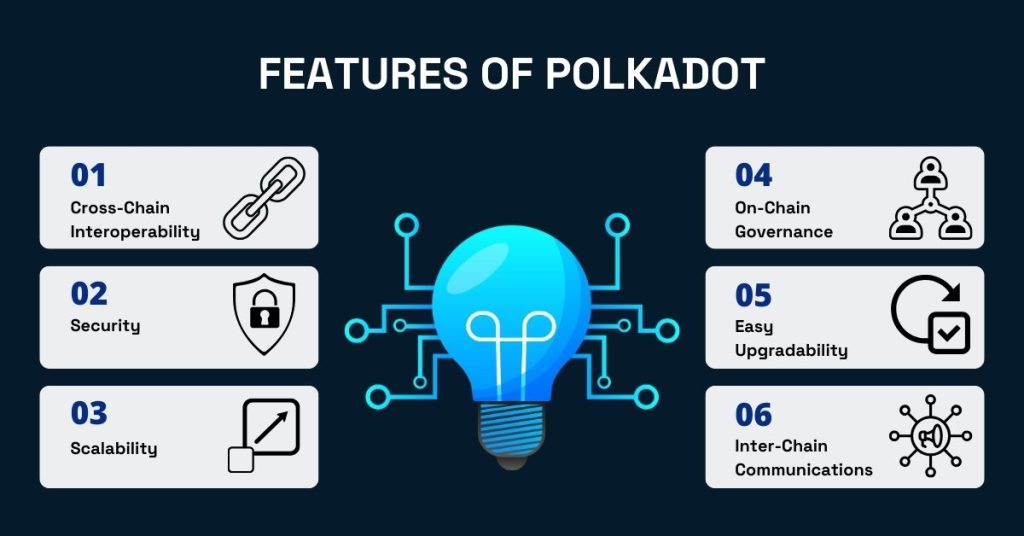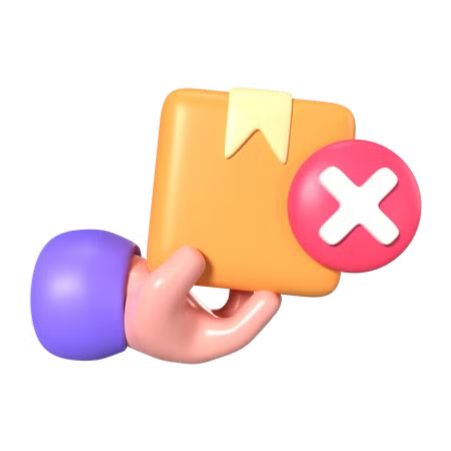Polkadot: Learn How to Use It, Invest in It, and Build on It Today!

Do you dream of a world where all blockchains can work together seamlessly, sharing data and resources?
Well, Polkadot is the answer and is making all of this possible.
Polkadot is still under development, but it’s already attracting a lot of attention from the crypto community. Major projects like Ethereum, Cosmos, and Chainlink are all building integrations with Polkadot.
If you’re interested in the future of crypto, you need to learn about Polkadot.
This article will give you a comprehensive overview of Polkadot, including its architecture, features, and benefits. You’ll also learn about the Polkadot ecosystem and how you can get involved.
So what are you waiting for? Start reading now!
1. What is Polkadot?
Polkadot is a platform that connects different blockchains, allowing them to work together. It’s known for its security, energy efficiency, and community-driven governance. How does it do it all together? Let’s find out.
Key Takeaways
Polkadot enables interoperability and cross-chain transfers seamless.DOT is the native token of the Polkadot ecosystem in terms of popularity, Polkadot ranks number 9 in the crypto world.
1.1. Overview
Consider Polkadot as a “chain of chain” due to its special technology which links different blockchains to share data with each other. It helps them solve problems faster. Imagine having different dance groups having their own dance style (contemporary, classic). Polkadot is a common place where all these groups can show their skills, learn from each other and work together on exciting projects. It helps them in achieving bigger goals as a whole pool, instead of operating individually. It makes the community more creative and stronger!
Created by Dr Gavin Wood in 2016, Polkadot’s mainnet launched in May 2020. Its native token, DOT, is crucial for network operations. Polkadot makes it possible for different blockchains to communicate and collaborate safely.
1.2. Cross-Chain Interoperability
Cross-chain interoperability is like a universal translator that lets different blockchains communicate. It helps them work together on a single platform, making the crypto world more connected and stronger.
1.3. Parachains and Relay Chains
Picture a relay race where individual runners (parachains) pass the baton to one another. The track they run on is the “relay chain.” Each parachain represents a team with its strengths and goals, and the relay chain ensures they work harmoniously by coordinating the baton-passing process and maintaining order. This coordination enables them to collectively strive toward the greater goal of creating a superior blockchain network. Polkadot takes pride in its parachain and relay chain technology as one of its core components.
2. An Overview of Polkadot’s Architecture
Polkadot consists of two primary components: relay chains and parachains. The relay chain serves as the control centre, overseeing all operations and ensuring smooth functionality. Parachains are like specialized teams focusing on distinct tasks or applications, working in parallel. These parachains are linked to the relay chains, akin to branches of a larger tree. They communicate through relay chains, sharing information, and enhancing the overall network’s resilience and versatility. This architecture streamlines the fast and flexible operation of the Polkadot system.
Also Read: What is a Blockchain?
3. The Governance Model
Governance in a community involves making decisions collectively, often through voting. In Polkadot, token holders have the privilege of casting votes on proposals that impact the network, such as system upgrades and the addition of new features. This democratic approach ensures that everyone has an equal say in the network’s evolution, promoting decentralization and aligning with the community’s needs.
4. Key features and Limitations
The features which make Polkadot unique are:

- Cross-Chain Interoperability: It unifies various blockchains on a single platform, promoting efficient collaboration and enabling the development of more intricate applications.
- Security: Parachains benefit from the security provided by the relay chains, bolstering the safety of individual chains.
- Scalability: Polkadot’s architecture allows multiple parachains to operate concurrently, enhancing overall network performance.
- On-Chain Governance: Token holders have the right to vote on proposals.
- Easy Upgradability: The network can be upgraded seamlessly without major disruptions.
- Inter-Chain Communications: It facilitates the exchange of data among parachains, promoting collaboration.
XCM, or cross-chain messaging, enables the smooth flow of messages and information between chains.
However, like any system, Polkadot has its limitations:
- It’s a relatively young platform compared to well-established blockchain networks.
- Some experts consider its architecture complex, which could present challenges for developers and new users.
- On-chain governance might lead to disagreements and delays in decision-making.
- The reliability of the relay chain could pose challenges if technical issues arise.
5. The Polkadot Ecosystem: An Introduction
The Polkadot ecosystem is a blend of various elements:
- Community: The global Polkadot community is open for anyone to join and contribute.
- Treasury: It’s a decentralized funding source driven by the community to support Polkadot projects.
- Telemetry: This is a real-time monitoring tool used to track the network’s performance.
- Brand Hub: A place to download logos and visual elements of the Polkadot brand for public use.
- Jobs: Offers opportunities for those interested in the crypto world.
- NFT Marketplaces: They have their space within the Polkadot ecosystem.
- Polkadot Apps: These are applications built on the Polkadot network, making use of its interoperability and features.
- Substrate Framework: This framework is used to create customizable blockchains, including parachains.
- Polkadot Bridges: These allow Polkadot to connect and communicate with other blockchains and networks, facilitating cross-chain interactions.
6. Staking with Polkadot
Staking is a way to earn rewards while participating in a network’s operation and governance. Here’s how it works:
- To participate in staking, you need DOT tokens.
- Validators use their DOT tokens as “stakes” to validate transactions.
- Nominators, who don’t want to run a validator node but still want to take part, delegate their DOT tokens to validators they trust. In return, they get a share of the rewards earned by the validators.
- Validators and nominators earn rewards, which come from the inflation of the DOT token supply and transaction fees.
- Staking helps secure the network through the participation of those who stake tokens. They also play a role in the network’s decision-making by voting on-chain.
- Staked tokens are usually “bonded” and locked in staking. There’s a period of time, called “unbonding,” required before you can access them again.
7. Tokenomics
The DOT token powers the Polkadot network, being its native coin.
| DOT | $4.41 |
| Market cap | $5.4 billion |
| 24-hour volume | $105.9 million |
| Circulating supply | 1.2 billion DOT |
| Typical hold time | 95 days |
| Popularity | 9 |
| All-time high | $55.00 |
8. Future of Polkadot
Experts believe that Polkadot has an excellent future! The market forecasts indicate that by 2030, DOT could touch $149.32, with an average price of $115.075. DOT holds a superior long-term technical analysis score to 88% of cryptos. The regular innovation in Polkadot infrastructure has helped it to be among the top crypto contenders.
9. Endnote
Polkadot is an ambitious project which aims to handle some of the challenges like interoperability and scalability. The unique architecture of relays and parachains creates a space where different blockchains can collaborate on the same platform. The on-chain governance system empowers the community and promotes adaptability. Keeping an eye on the constantly evolving crypto world would help Polkadot to upgrade as per the requirement!
10. FAQs
Polkadot is built with an aim to connect different blockchains on one platform, allowing cross-chain operations, interoperability and scalability.
Polkadot can be used for staking. However, the prices are volatile owing to the nature of cryptocurrencies. It is important to analyse the market situation before investing.
Polkadot has attained a significant position due to its advanced technology and interoperability.
Well Done! You have now completed the Lesson.
Complete the Quiz and Get Certified! All The Best!
Disclaimer and Risk Warning
The information provided in this content by Coinpedia Academy is for general knowledge and educational purpose only. It is not financial, professional or legal advice, and does not endorse any specific product or service. The organization is not responsible for any losses you may experience. And, Creators own the copyright for images and videos used. If you find any of the contents published inappropriate, please feel free to inform us.


 Previous Lesson
Previous Lesson












